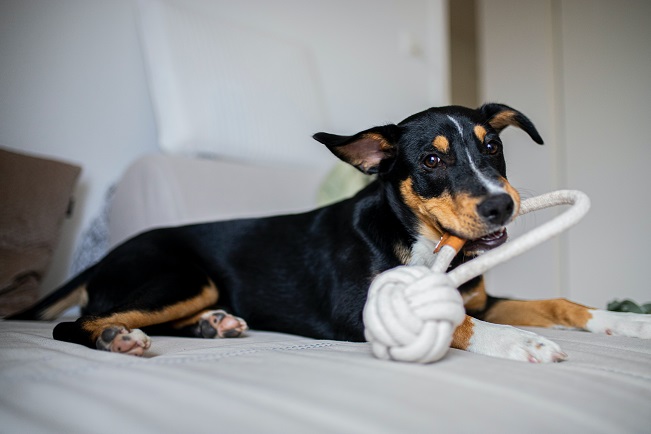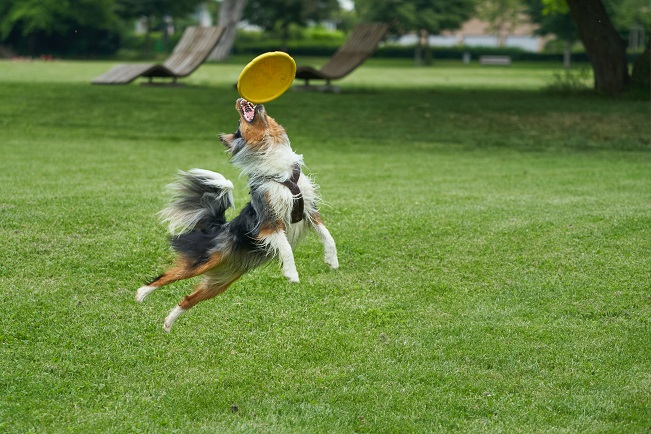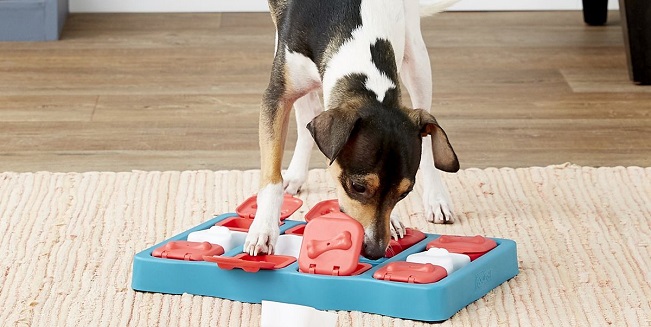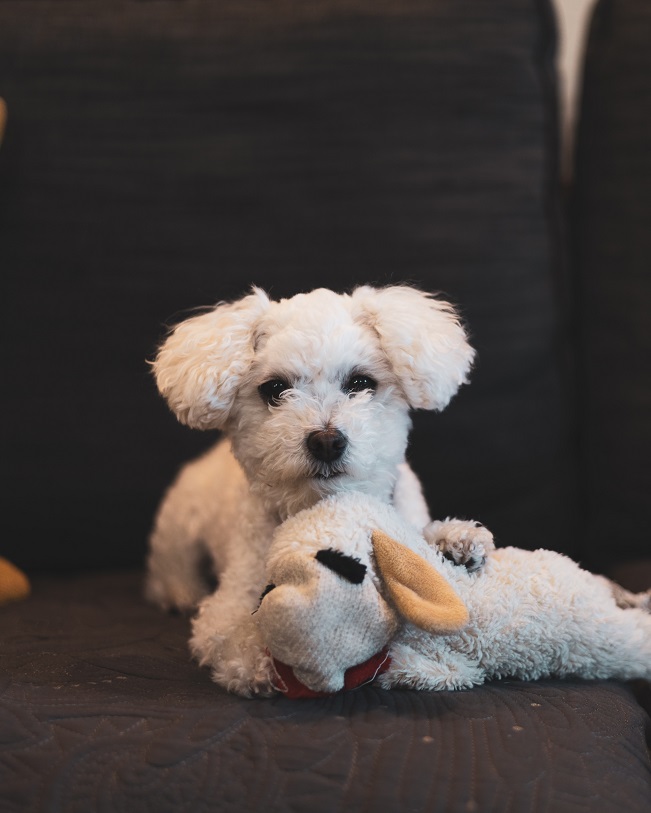Playing is a huge part of dogs’ lives, not only as entertainment but as a way to stay physically and mentally in shape. We could all probably use more playtime in our busy lives, so when you take your dog out for a walk, run in the park, or play in the garden, think of all the benefits that fun time has for both of you. However, when matching your pooch’s energy is not possible, getting them toys is the next best solution.
Are Toys Good for Dogs?

Many vets and long-time dog owners will tell you that playthings are essential for dogs’ entertainment and stimulation. They can prevent destructive behaviour, provide them with much-needed exercise, and develop their character. Buying the right dog toy is more than just picking up the first one you see on the shelf. You need to think about their purpose, how safe they are for your dog, as well as the size and breed of your pet.
With the increasing offer of pet toys, it could be puzzling which ones to buy and which ones to pass on. To help you in making a well-informed decision, we will go over some of the things you should be cautious about and some of the features of good toys.
Things to Be Cautious About
You have probably come across all kinds of eye-catching items with popping colours and various decorations. And even though they may look attractive to your dogs, they can often be dangerous. When getting new toys, keep an eye on the following:
- Size of toys – And your dog’s current size. Small balls, stuffed animals or any toy that has small parts can be easily swollen and become lodged in the dog’s mouth or throat, so choose appropriate sizes.
- Loose decorations – Strings, ribbons, bells, and plastic eyes can be easily chewed off and ingested, which may lead to discomfort or in more serious cases – a trip to the vet.
- Squeakers – Many dogs feel they must find and destroy the squeak source buried inside the toy, so they quickly dig into it. Take note of this and supervise the play.
- Filling – Soft toys are easily destructible, and although no filling is digestible, some are extremely harmful, like nutshells and polystyrene beads. Check the labels for child or pet safety and choose sturdier items.
Some playthings should be used only under your supervision, especially if your dog likes chewing, tearing up the item, or is still very young. Depending on the dog’s size and their character, some items are safer and more fun than others.
Recommended Playthings
There are several products that have earned the trust of the pet community and vets. Toys that have been tried and tested and proven to be safe and fun for different size dogs. They are meant to encourage the pups’ development, fit their chewing habits and keep them active in an acceptable way.
Play Together with Interactive Items

Dogs love running and fetching, pursuing balls and flying disks. This of course, means you need to participate. You can make the walk in the park more active and fun if you get a couple of exercise dog toys like frisbees in a variety of forms and sizes, or rubber products that bounce unpredictably. Retrieving the objects will mean good exercise for the dog and a lot of energy spent.
Ropes are another interactive plaything that can be fun when done properly. Training your dog to grab and release the toy on your command will take some time if you don’t want them to grab other things from your hands as well.
Keep Them Engaged with Distraction Toys

Pups get easily bored, and if they have nothing to do, they might turn to a destructive behaviour like chewing your belongings, the furniture or your favourite shoes. That’s why it’s a good idea to have a few items that will keep them distracted while you are busy. Food puzzles with small treats are an excellent example of boredom busters that also teach the dogs some coordination skills and patience.
Chew toys will not only keep them occupied but also help with the dog’s dental hygiene. Dental chew playthings for dogs are suitable for massaging the gum and eliminating food particles from the teeth. Chewing is a natural instinct for these animals; it relaxes them and makes them calm.
Get Them a ‘Friend’ for Comfort

Just like all of us, dogs can get lonely, experience separation anxiety or need a ‘friend’. A durable item that will withstand a lot of wear and tear can be a very comforting tool. These are usually soft plushy toys that can become precious to your dog. They love looking after them and spending time with them, which gives them a better ability to cope with periods when you are unavailable.
Keep Their Mind Stimulated
In addition to good physical activity, some dog breeds need good mental stimulation. Toys that require problem-solving will engage their brain, enhance their ability to learn, and develop new skills. Keeping their minds sharp and alert with games is a way to prevent dementia too or other mental issues common with older dogs. These items promote their natural behaviour such as foraging, exploring, and playing.
Final Word
There are plenty of benefits that dogs get out of playing and let’s not forget that it is simply fun. Toys make dogs happy, help them relax, and keep stress levels at bay. They are fantastic at preventing problem behaviour such as excessive barking and inappropriate chewing. Get the most out of the toys by rotating them weekly and keep some easily accessible. This will also make it easier for you to complete your own tasks while your pet is playing.
But keep in mind, your four-legged friend needs ‘people time’, so no plaything can replace you completely. Interactive play is an opportunity for socialisation, learning about appropriate and inappropriate behaviour around people and other animals, and ultimately, catching some good fun.
























